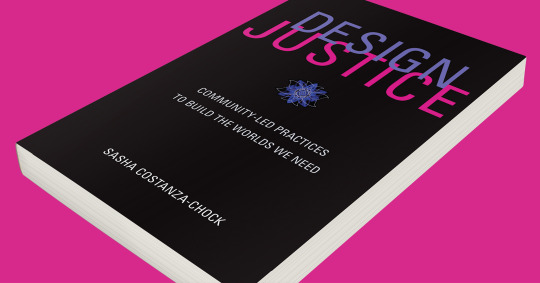#systematic inclusion

Photo credit: Caydie McCumber
By Shardell Joseph
An associate professor at MIT University, USA, has written a new book named Design Justice examining the way in which technology can be functional for more people within the society. The new book focuses on the correlation between technology, design, and social justice.
In the book, Design Justice: Community Led Practices to Build the Worlds We Need, Sasha Constanza-Chock shared their experience as a transgender and nonbinary person, and explained how technology could help improve the experiences of others that belong to minority groups.
Highlighting the biases built into everyday objects, including software interfaces, medical devices, social media, and the built environment, Constanza-Chock examined how these biases reflect existing power structures in society. published by the MIT Press, the book offers a framework for fixing the shortcomings of technology in society, while suggesting methods of technology design that can be used to help build a more inclusive future.
‘Design justice is both a community of practice, and a framework for analysis,’ said Costanza-Chock, who is the Mitsui Career Development Associate Professor in MIT’s Comparative Media Studies/Writing program. ‘In the book I’m trying to both narrate the emergence of this community, based on my own participation in it, and rethink some of the core concepts from design theory through this lens.’
In one particular example, Constanza-Chock talked about how something as simple as going through airport security can become an unusually uncomfortable process. Airport’s tend to be set up with security millimetre wave scanners which are set up with binary, male or female configurations. To operate the machine, agents press a button based on their assumptions about the person entering the scanner – blue for ‘boy,’ or pink for ‘girl’. As a non-binary person, Constanza-Chock would always be flagged by the machine when travelling, prompted for a hands-on check by security officials.

‘I know I’m almost certainly about to experience an embarrassing, uncomfortable, and perhaps humiliating search… after my body is flagged as anomalous by the millimetre wave scanner,’ Constanza-Chock wrote in the book.
This is an experience familiar to many who fall outside the system’s norms, Costanza-Chock explains – trans and gender nonconforming people’s bodies, black women’s hair, head wraps, and assistive devices are regularly flagged as ‘risky’.
The book also looks at the issue of who designs technology, a subject Costanza-Chock has examined extensively — for instance in the 2018 report ‘#MoreThanCode,’ which pointed out the need for more systematic inclusion and equity efforts in the emerging field of public interest technology.
Costanza-Chock, hopes the book will interest people not only for the criticism it offers, but as a way of moving forward and deploying better practices.
‘My book is not primarily or only critique,’ Costanza-Chock said. ‘One of the things about the Design Justice Network is that we try to spend more time building than tearing down. I think design justice is about articulating a critique, while constantly trying to point toward ways of doing things better.’
